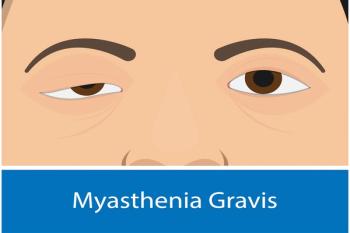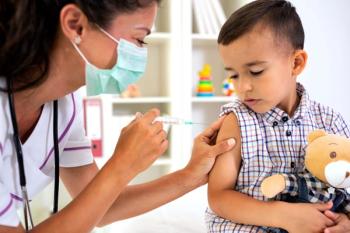
ASPEN Trial Shows Efficacy of Brensocatib in Different Dosages: James Chalmers, MD
Different dosages of brensocatib proved effective in treating people living with bronchiectasis when studied in the ASPEN trial.
James Chalmer, MD, chair of Respiratory Research, Cardiology, at the University of Dundee, Scotland, spoke at the
This transcript has been lightly edited for clarity; captions were auto-generated.
Transcript
Can you share the results of the phase 3 ASPEN trial?
The ASPEN trial is by far the largest trial ever conducted in patients with bronchiectasis, and it's the first unequivocally positive phase 3 trial in this disease. Patients were randomized 1:1:1 to brensocatib, 25 mg; brensocatib, 10 mg; or placebo for 52 weeks, and the primary outcome was the frequency of exacerbations. There were a number of secondary outcomes related to exacerbations, and then other key secondary outcomes included the decline in lung function, [forced expiratory volume] FEV1, and symptoms measured by a quality of life questionnaire. The overall findings showed an approximate 20% reduction in exacerbation frequency with both the 10-mg and the 25-mg dose compared to placebo. The other exacerbation end points also showed benefit. And excitingly, for me, the 25-mg dose showed a slowing in the rate of decline in FEV1. What we're presenting here at ATS is a number of additional subgroup analyses. These were prespecified subgroup analyses, including analyses in people who were using long-term macrolide treatment, patients who had raised blood eosinophil counts, and in the adolescent subpopulation. And if you've got a moment, I will take you through the results of those 3.
Macrolides are really important, because that's 1 of our standard of care background treatments. So clinicians want to know, does brensocatib give us a benefit on top of macrolide? And what we've shown in that subgroup analysis is that the exacerbation benefits and the lung function benefits are very similar whether or not you're on baseline macrolide or not. So what that tells clinicians is that you can use brensocatib before macrolide, if your patient's on macrolide, you can add brensocatib on top of macrolide, you'll still get the same benefit. For the eosinophil subpopulation, there has been a lot of noise in the research community around eosinophilic inflammation and whether those patients need a different treatment approach. What we've shown is that those patients also have neutrophilic inflammation, and in the ASPEN subpopulation who have raised blood eosinophils above 300 cells per microliter, the response to treatment in terms of exacerbations and lung function benefit was the same as in those with low blood eosinophils. The message there for clinicians is: you can use brensocatib irrespective of high blood [eosinophils] EOS or low blood EOS, if the medication is approved.
Finally, I'll mention the adolescent subpopulation. I think it's fantastic that we now have some data in an adolescent population, because I said bronchiectasis has been neglected, but pediatric bronchiectasis has really been neglected over the years. So it's great that subgroup was included within the trial. This is an adolescent group, 12 to 18 years, and what we saw in that patient population, we weren't looking for powered effects. We were looking for directional trends in that group. We saw exacerbation reductions in the adolescents that were very similar to what we saw in the adults. And in terms of lung function, we saw very interesting data. There was a very high rate of lung function decline, 260 ml over 52 weeks in the placebo treated patients, and that was prevented in the patients who were given brensocatib, which suggests, again, that you can have confidence that the results that we found in the overall population can also be applied to the adolescent population.
Newsletter
Stay ahead of policy, cost, and value—subscribe to AJMC for expert insights at the intersection of clinical care and health economics.













































